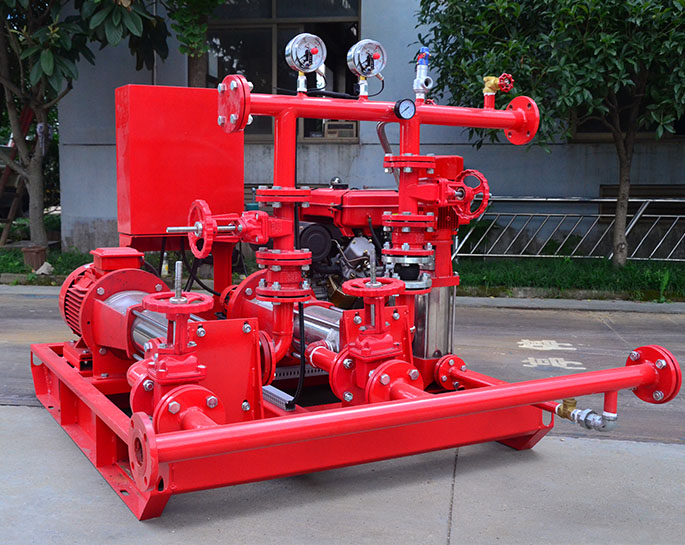Troubleshooting of fire pumps
Troubleshooting fire pumps involves identifying and resolving issues that affect their performance and functionality. Here's a step-by-step guide to troubleshooting fire pumps:
-
Gather Information:
- Collect relevant information, including the pump's specifications, maintenance history, and any recent changes in operation.
-
Identify Symptoms:
- Define the specific symptoms or issues the pump is experiencing, such as abnormal noise, vibration, low pressure, or failure to start.
-
Safety Precautions:
- Ensure safety protocols are in place before troubleshooting. Disconnect power sources and follow appropriate lockout/tagout procedures.
-
Start with Basics:
- Check for obvious issues such as power supply, circuit breakers, and switches. Make sure the pump is receiving power.
-
Check Indicator Lights:
- If the pump has indicator lights or alarms, observe them for any abnormal indications.
-
Inspect Mechanical Components:
- Check for misalignment, loose bolts, and worn parts. Inspect bearings, couplings, impellers, and seals for damage or wear.
-
Evaluate Electrical System:
- Inspect wiring, connections, and control panels for damage, corrosion, or loose connections.
- Check for proper voltage levels and phase balance.
-
Monitor Vibration:
- If applicable, use vibration monitoring equipment to assess vibration levels. Abnormal vibration can indicate misalignment or mechanical issues.
-
Cavitation Check:
- Inspect the suction strainer and suction line for blockages that could cause cavitation.
- Verify that the suction tank is properly filled and vented.
-
Check Piping:
- Inspect suction and discharge piping for leaks, blockages, and proper valve positions.
-
Review System Controls:
- Verify that pressure switches, relief valves, and control settings are functioning correctly.
-
Review Recent Changes:
- If any changes were made to the system or its components recently, investigate whether they could be causing the issue.
-
Review Maintenance Records:
- Check the maintenance records for recent maintenance activities or repairs that might be related to the problem.
-
Examine Alarm Logs:
- If the pump has an alarm system, review the alarm logs to identify any recurring issues or patterns.
-
Consult Manuals and Documentation:
- Refer to the pump's manuals and documentation for troubleshooting guidelines provided by the manufacturer.
-
Vibration Analysis:
- If vibrations are present, conduct a detailed vibration analysis to determine the source and severity of the vibration.
-
Contact Manufacturer or Expert:
- If you're unable to identify the problem, consider reaching out to the pump manufacturer's technical support or a qualified pump service expert.
-
Take Corrective Action:
- Based on your findings, take the necessary corrective actions, which may include repairs, replacements, adjustments, or further investigation.
-
Testing and Monitoring:
- After making repairs, conduct tests to ensure the pump is functioning as expected.
- Implement a monitoring plan to track the pump's performance and identify any recurring issues.
Remember that troubleshooting can vary depending on the specific pump model, system configuration, and the nature of the problem. It's important to approach troubleshooting systematically and avoid taking risks that could compromise safety or exacerbate the issue.


.png)
.png)

.png)


